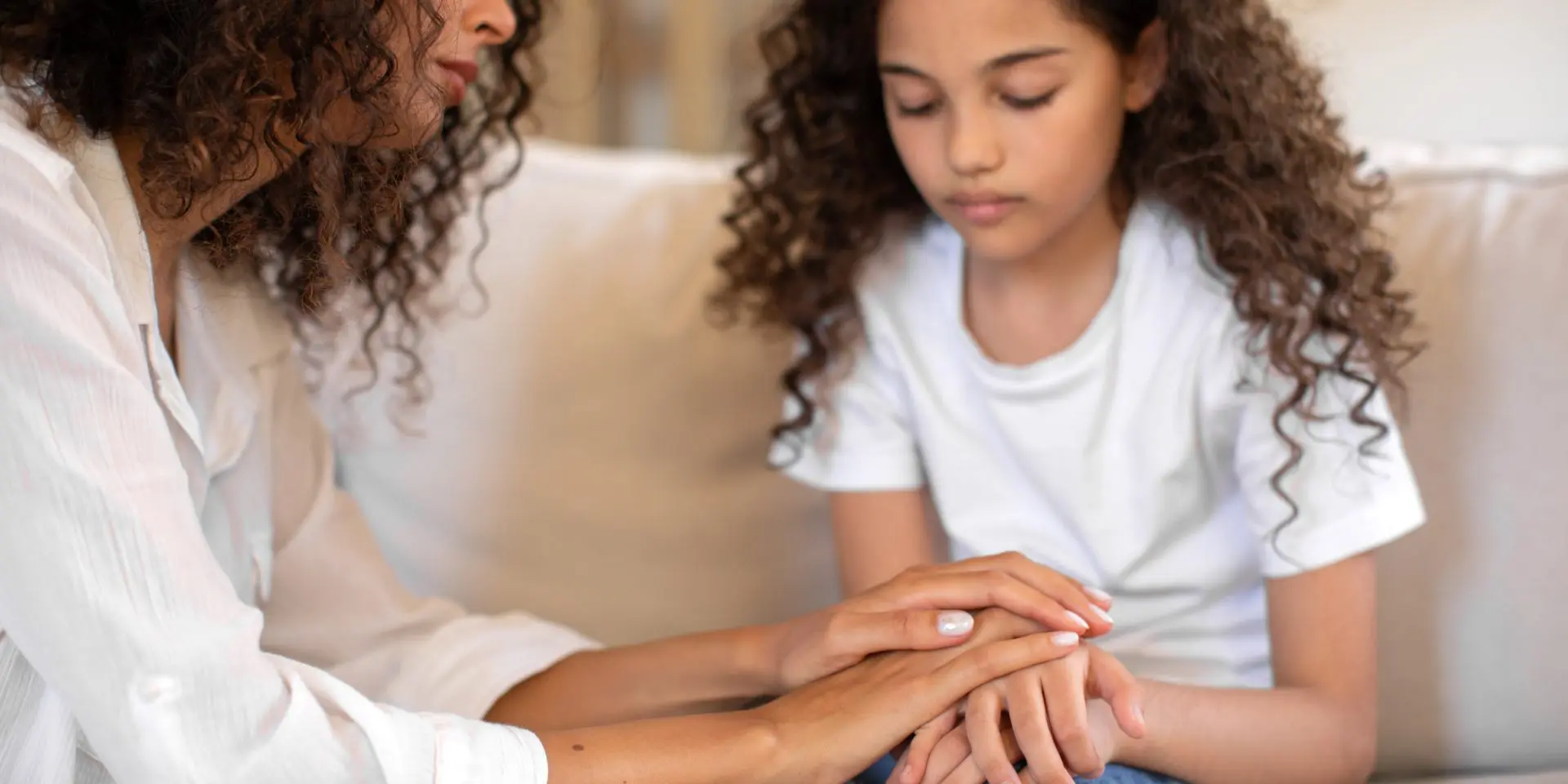The decision to view the body of a loved one who has died is a very personal choice for adults, and it is the same for children. The important thing is that a child or young person is given the choice and that this is an informed choice – they need to understand what viewing the body will mean.
Adults often worry that children will be left with the image of a person’s body and that it will be scary. Preparation is the key. Often a child’s imagination about what someone will look like after they have died is worse than the reality, so if children have clarity they often can manage this very well. It can also help young children to understand the permanence of the death of a loved one as they are able to see the physical body. You can read about explaining death to a child here.
Being left with the image of a person’s body doesn’t have to be negative, and we encourage conversations both about what the person looked like after they died and about what they were like when they were alive. This balance is important for children to be able to carry the positive memories alongside their grief and loss.
How to prepare children and young people to view the body of a loved one
If the child decides they do want to see the body, then there are some important things you can do to help to prepare them.
1. Make sure the child has understood that the person has died
It is important for children to have understood that the person has died. If a child is asked, “Do you want to go and see Uncle Jack?” then they will, of course, say that they do, as they will not understand that it is a body and that they are no longer alive.
If the conversations have already taken place about the person’s body not working anymore and that they have died, it makes the conversation about viewing a body easier for your child to understand.
2. Explain how the person’s body might be different
Explaining that the person’s body may look and feel different is also very important. You could explain that the person’s heart isn’t working anymore, and therefore their blood isn’t being pumped around the body so they will look pale. This also means that their skin will be cold to touch.
Explain that although their eyes will be closed, they are not asleep. Be very clear that when we are alive and go to sleep, our hearts still beat and we still breathe, but the person who has died is no longer breathing and their heart is no longer beating.
3. Describe what they might see
Be clear about how the body might be presented, for example, “Mummy will be lying in a wooden box called a coffin. The lid will be open so we will be able to see her body and she will be dressed in the outfit that you helped to choose.”
Describing the room that the person who has died will be in, is also important. If possible, take them to the room before the body is there so they can get a sense of what it will be like. Speak to the undertakers as often they can accommodate visits to the room beforehand.
4. Make sure they understand it is their decision
Explain that they can stand at the door and look from afar, or they can go close and touch the person – it is their choice. Remind them that they can leave at any moment and that they can change their mind at any point.
Make sure to reassure them that there is no right or wrong way, and if they choose not to go that does not mean that they didn’t love the person who has died. This is especially important when there are siblings, some who want to view the body and some don’t.
Helping the child make the decision
It is important to explain to the child or young person that if they do see the body of their person, it will be the last time they see them. After seeing the body from the last time, instead of seeing them again, they can remember their person through photos, memories, writing, and in their own mind. Making the child or young person aware of this does not intend to put pressure on the child or young person to decide about viewing the body, but to help them to understand that after the funeral, cremation, or service, the body will be gone.
Alternative ways to say goodbye
Sometimes, viewing a body is not possible but there can be ways for children to still feel close to the person and to have an opportunity to say goodbye before a cremation or burial. They may like to spend time with the coffin with the lid closed, or sometimes a body can be covered with a sheet. If possible, having the person’s hand exposed can give children a way to see part of the person and even hold the hand if they choose. Find more suggestions of ways for children, young people, and families to remember someone here.

Other articles you might find helpful
Telling a child someone has died
This may be the hardest thing you ever do but our team share their advice on some gentle and caring ways in which to tell a child that someone they love has died.
What do children understand about death?
How much children understand about death will be different at different ages and stages of development. These are the most common understandings of death by children of different ages.




